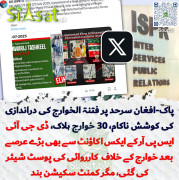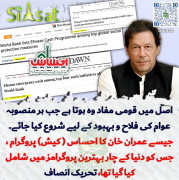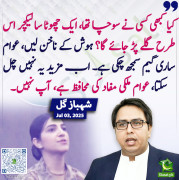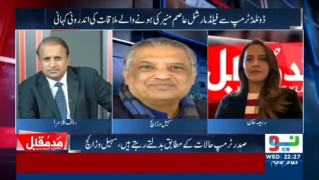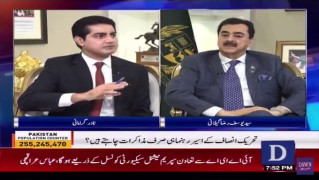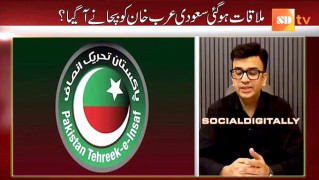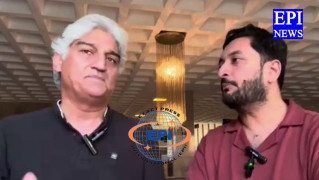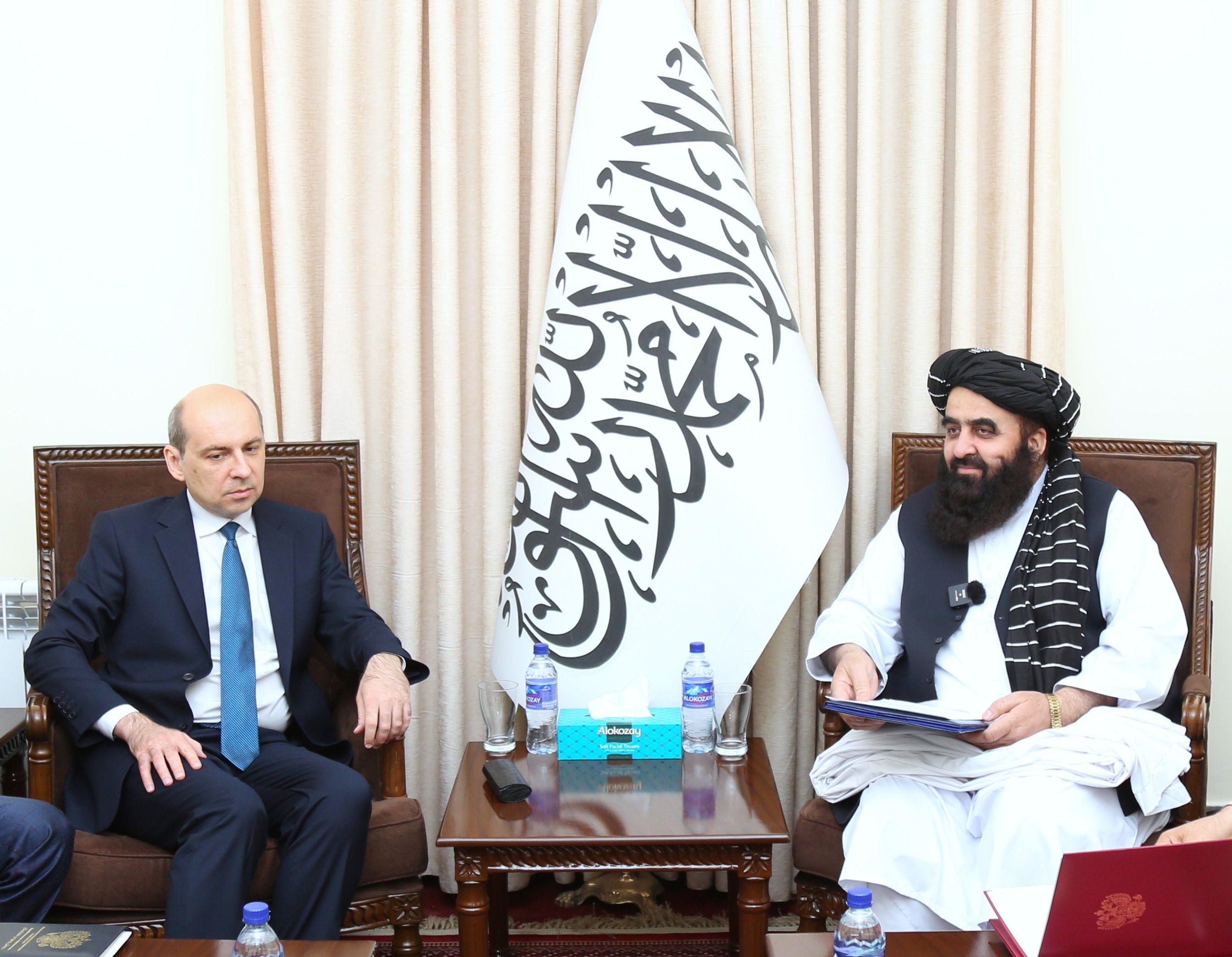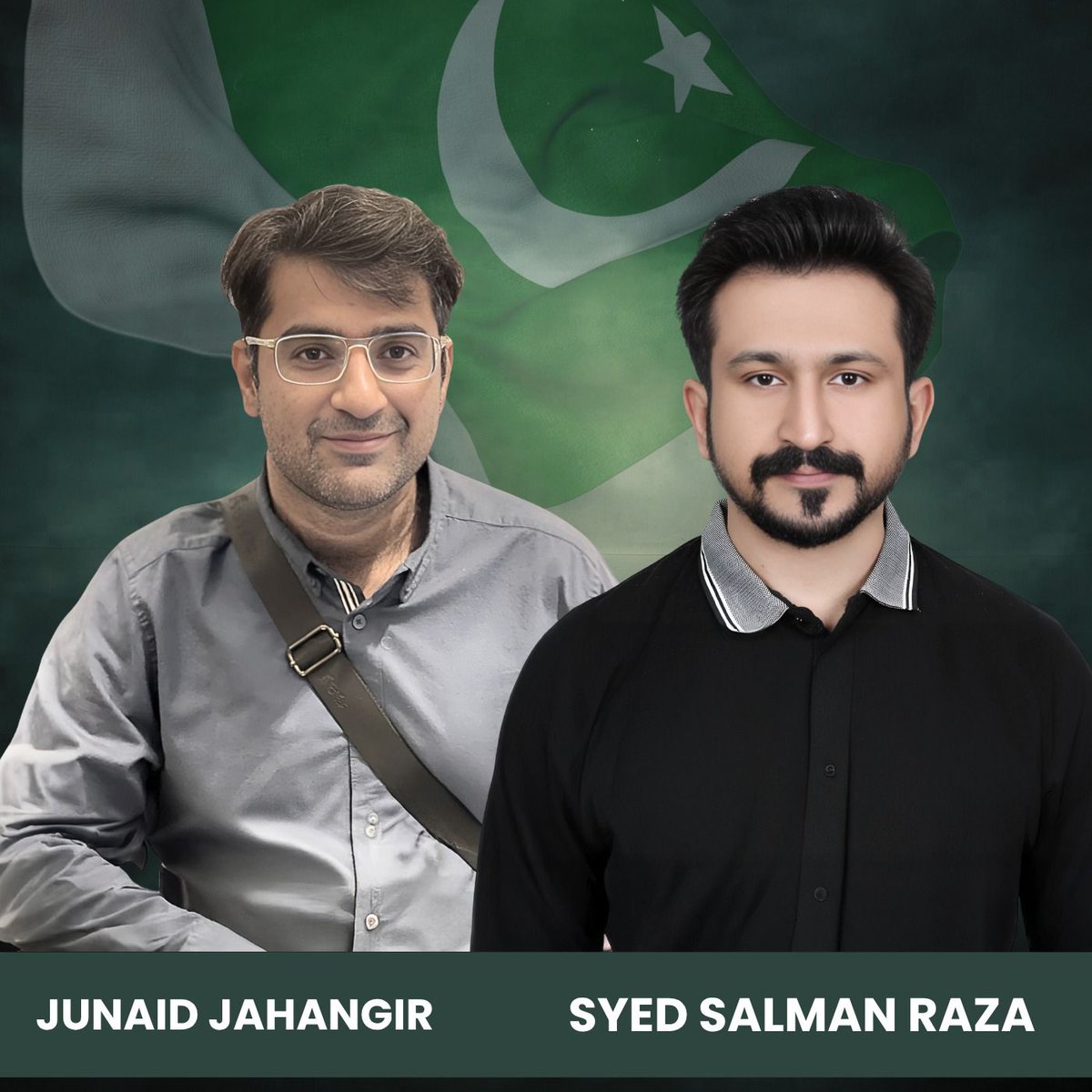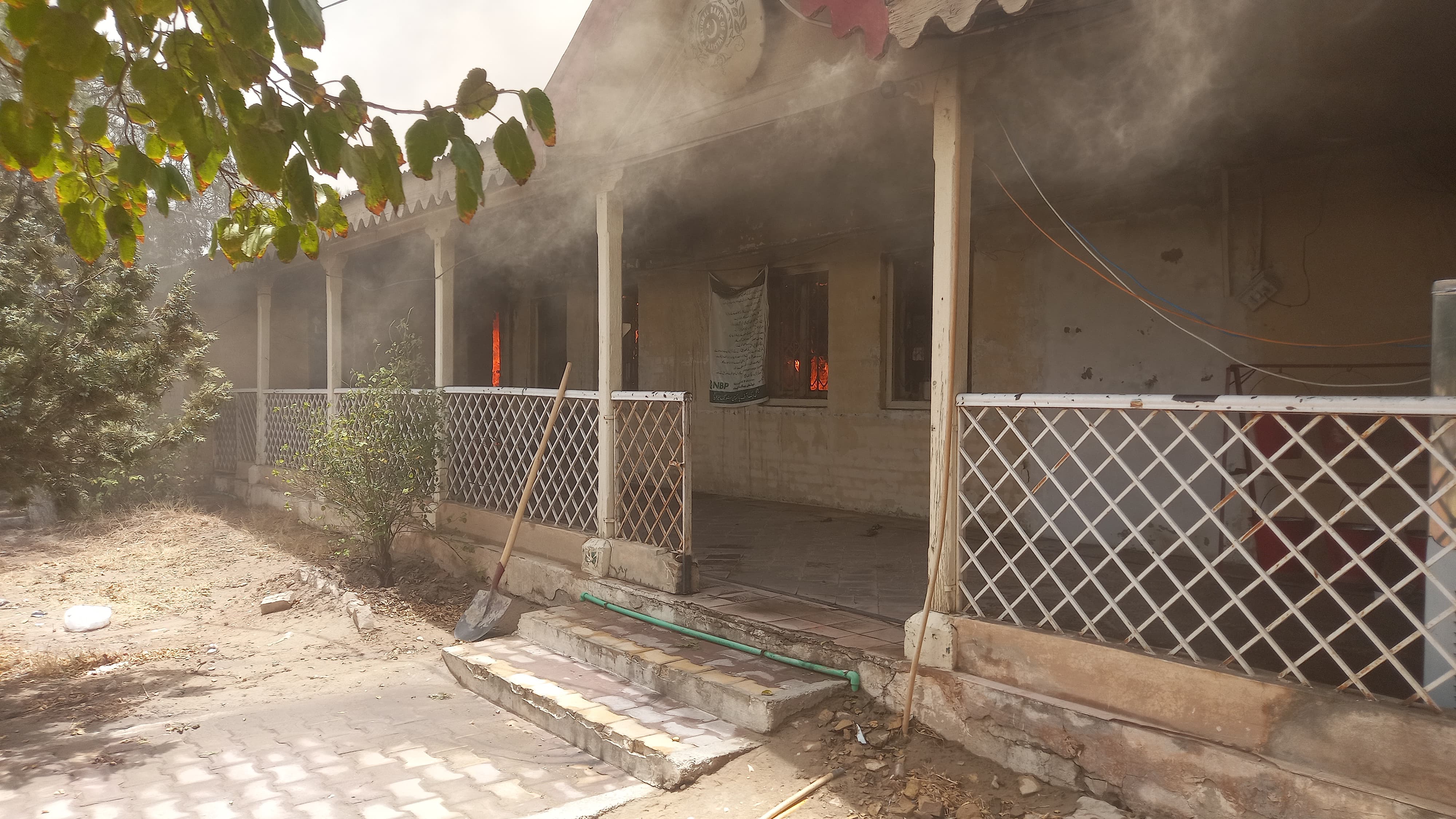I got the still pictures and eventually I will come across video as well. Its not Indians who made the table. Plane landing video slums starts at 5.48 ends at 6.00 and according to your math that makes 80 percent Bombay a slum:lol:. You must have gone to same math school as Modern Fakir:lol:. You still have not provided any stat to back up your yaps about 900 million Indians below poverty level
Sorry late to the party, everyone started without me.(bigsmile)
You wanted facts.
[h=1]Poverty in India[/h] From Wikipedia, the free encyclopedia
Jump to:
navigation,
search
[TABLE="class: wikitable sortable, width: 30%, align: right"]
[TR]
[TH="colspan: 3"]Poverty Headcount Ratio (2010)[SUP]
[1][/SUP][/TH]
[/TR]
[TR]
[TH]Poverty Trend[/TH]
[TH]
World Bank[/TH]
[/TR]
[TR]
[TD]Live with less than $1.25 a day[/TD]
[TD]32.7% (400 million)[/TD]
[/TR]
[TR]
[TD]Live with less than $2.00 a day[/TD]
[TD]68.7% (841 million)[/TD]
[/TR]
[TR]
[TD]Live with less than $2.50 a day[/TD]
[TD]81.1% (992 million)[/TD]
[/TR]
[TR]
[TD]Live with less than $4.00 a day[/TD]
[TD]93.7% (1,148 million)[/TD]
[/TR]
[TR]
[TD]Live with less than $5.00 a day[/TD]
[TD]96.9% (1,179 million)[/TD]
[/TR]
[/TABLE]


Map of world poverty by country, showing percentage of population living on less than
$1.75 per day. Based on 2009 UN Human Development Report.


Map of world poverty by country, showing percentage of population living on less than
$2 per day. Based on 2009 UN Human Development Report.
Poverty in India is widespread, with the nation estimated to have a third of the world's poor. In 2010, the
World Bank reported that 32.7% of the total Indian people fall below the
international poverty line of US$ 1.25 per day (
PPP) while 68.7% live on less than US$ 2 per day.[SUP]
[1][/SUP]
According to 2010 data from the
United Nations Development Programme, an estimated 29.8% of Indians live below the country's national poverty line.[SUP]
[2][/SUP] A 2010 report by the Oxford Poverty and Human Development Initiative (OPHI) states that 8 Indian states have more poor people than 26 poorest African nations combined which totals to more than 410 million poor in the poorest African countries.[SUP]
[3][/SUP][SUP]
[4][/SUP] A 2013 UN report stated that a third of the worlds poorest people live in India.[SUP]
[5][/SUP]
According to a 2011 poverty Development Goals Report, as many as 320 million people in India and China are expected to come out of extreme poverty in the next four years, while India's poverty rate is projected to drop to 22% in 2015.[SUP]
[6][/SUP] The report also indicates that in Southern Asia, however, only India, where the poverty rate is projected to fall from 51% in 1990 to about 22% in 2015, is on track to cut poverty by half by the 2015 target date.[SUP]
[6][/SUP]
However, this decline in poverty is debatable given the fact that there are question marks on
methodology of evaluating poverty. Indian journalist Ravi S Jha writes in the Guardian[SUP]
[7][/SUP] on the need of measuring poverty by segregating India's poor in different groups. While the rich are getting richer and poor are getting poorer, the areas in which Indias middle and upper classes make their living have seen the highest degree of economic liberalisation, while the areas in which the poor earn their livelihood have seen the fewest of reforms. Since 1991, India has undergone a great deal of liberalisation internally and externally. Many feel that the gains of this liberalisation and globalisation have not accrued to the poor. The absolute number and proportion of people living in poverty in India is staggering.
The latest UNICEF data shows that one in three malnourished children worldwide are found in India, whilst 42% of the nation's children under five years of age are underweight. It also shows that a total of 58% of children under five surveyed were stunted. Rohini Mukherjee, of the Naadi foundation one of the NGOs that published the report stated India is "doing worse than sub-Saharan Africa."[SUP]
[8][/SUP]
The 2011
Global Hunger Index (GHI) Report places India amongst the three countries where the GHI between 1996 and 2011 went up from 22.9 to 23.7, while 78 out of the 81 developing countries studied, including Pakistan, Nepal, Bangladesh, Vietnam, Kenya, Nigeria, Myanmar, Uganda, Zimbabwe and Malawi, succeeded in improving hunger conditions.[SUP]
[9][/SUP]
[h=2]Contents[/h]
[h=2]Poverty estimates[/h] [h=3]Pre-Independence[/h] [h=4]National Planning Committee 1936[/h] The National Planning Committee in 1936 under
Nehru made an economic review and recognised that "there was lack of food, of clothing, of housing and of every other essential requirement of human existence". Against this assessment, the Committee declared that the development policy objective should be to "ensure an adequate standard of living for the masses, in other words, to get rid of the appalling poverty of the people" . Towards this end, the Committee defined goals for the total population in terms of nutrition (involving a balanced diet of 2400 to 2800 calories per adult worker), clothing (30 yards per capita per annum) and housing (100 sq. ft per capita).[SUP]
[10][/SUP]
[h=3]Post -Independence[/h] Defining a poverty line is the first step in estimating poverty.


Starving children in India
The poverty line which divides the poor from the non-poor is got by putting a price on the minimum required consumption levels of food, clothing, shelter, fuel and health care, etc.[SUP]
[11][/SUP] There have been various attempts to define poverty line in Indian context.
[h=4]Working Group of eminent Economists and social thinkers 1962[/h] After taking into account the recommendations of the 1958 Nutrition Advisory Committee of the
Indian Council of Medical Research[SUP]
[12][/SUP] regarding
balanced diet, the first attempt to define a poverty line after independence, was made in 1962 by a Working Group of eminent Economists and social thinkers.[SUP]
[13][/SUP] The Working Group was set up by the Seminar on Some Aspects of Planning[SUP]
[14][/SUP] and consisted of Prof.
D.R. Gadgil, Dr. B.N. Ganguli, Dr. P.S. Lokanathan,
M.R. Masani, Ashok Mehta, Pitambar Pant, Dr.
V.K.R.V. Rao,
Shriman Narayan, Anna Saheb Sahasrabuddhe. It recommended in 1962 that:[SUP]
[11][/SUP]
- The national minimum for each household of 5 persons (4 adult consumption units) should be not less than
100 per month in terms of 196061 prices or 20 per-capita. For urban areas, this figure will have to be raised to 125 per month per household or 25 per capita to cover the higher prices of the physical volume of commodities on which the national minimum is calculated.
- An element of subsidy in urban housing will have to be included after taking 10 per month, or 10 per-cent as the rent element payable from the proposed national minimum of 100 per month.[SUP][14][/SUP]
But, this national minimum, considered adequate to ensure minimum energy requirements for an active and healthy life and also minimum clothing and shelter, did not include expenditures on health and education, which are to be provided by the State as per the
Directive Principles of State Policy of
Indian Constitution.
[h=4]V M Dandekar and Nilakantha Rath 1971[/h] V M Dandekar and Nilakantha Rath in their work "Poverty in India"[SUP]
[15][/SUP] used an average calorie norm of 2,250 calories per capita per day for both rural and urban areas, as a criterion to define the poverty line. On the basis of
National Sample Survey data on consumer expenditure, the study revealed that, in rural area, the households with an annual per capita expenditure of
170.80 (or equivalently
14.20 per-capita per month) at the 196061 prices consumed on an average food with calorie equivalent of 2250 per capita per day together with such non- food items as they chose.


Deformities from leprosy in India
The corresponding figures in the urban area were
271.70 and
22.60 at 196061 prices. Comparing their studies with that of the 1962 Work Group Report, they revised the rural minimum upwards to
180 per-annum or
15 per month. Similarly, they rounded off the urban minimum to
270 per annum or
22.50 per month, both at 196061 prices. According to their estimate, about 40 percent of the rural population and 50 percent urban population lived below this poverty line in 196061.[SUP]
[16][/SUP]
[h=4]Task Force on Projections of Minimum Needs and Effective Consumption Demand −1979[/h] The "Task Force on Projections of Minimum Needs and Effective Consumption Demand", of the Perspective Planning Division, under Planning Commission defined the poverty line as the per-capita expenditure level at which the average per-capita, per day calorie intake was 2435 calories in rural areas and 2095 calories for urban areas. The Task Force used the age, sex-activity specific calorie allowances recommended by the Nutrition Expert Group (1968) to estimate the average daily per capita requirements for rural and urban areas using the age-sex-occupational structure of their respective population (as projected for 198283). For reasons of convenience the calorie norms were rounded off to 2400 calories per capita per day for rural areas and 2100 calories per capita per day for urban areas.The monetary equivalent of these norms (i.e., poverty lines), were calculated using the 28th Round (197374) NSS data relating to household consumption both in quantitative and value terms were used.Based on the observed consumer behaviour in 197374 it was estimated that, on an average, consumer expenditure of Rs.49.09 per capita per month was associated with a calorie intake of 2400 per capita per day in rural areas and Rs.56.64 per capita per month with a calorie intake of 2100 per day in urban areas.[SUP]
[17][/SUP]
[h=4]The Expert Group on 'Estimation of Proportion and Number of Poor' Lakdawala Committee, 1993[/h] An Expert Group on 'Estimation of Proportion and Number of Poor' was constituted under the Chairmanship of Professor D.T. Lakdawala, to look into the methodology for estimation of poverty and re-define the poverty line, if necessary. The Expert Group submitted its report in 1993.


Victim of Leprosy
The Expert Group recommended that the poverty line approach anchored in a calorie norm and associated with a fixed consumption basket (as recommended by the 1979 Task Force) might be continued.However, the Expert Group further recommended that the state specific poverty lines be worked out.This was done in two steps.
- To work out State-specific poverty line for the base year 197374 by taking the standardised commodity basket corresponding to the poverty line at the national level and valuing it at the prices prevailing in each state in the base year.
- Updating the poverty line to reflect current prices in a given year by applying state-specific consumer price indices.
Other recommendation of the Expert Group was to abandon the pro-rata adjustment of NSS based total house hold consumption expenditure to National Accounts Statistics based total private consumption expenditure as the gap between the two had widened overtime. The Expert Group observed that it was better to rely exclusively on the NSS for estimating the poverty ratios. The Government of India accepted the recommendations of the Expert Group with minor modifications in 1997. [SUP]
[18][/SUP]
There has been no uniform measure of poverty in India.[SUP]
[19][/SUP][SUP]
[20][/SUP] The
Planning Commission of India has accepted the
Tendulkar Committee report which says that 33% of people in India live below the
poverty line (BPL).[SUP]
[21][/SUP]
The
Arjun Sengupta Report (from the National Commission for Enterprises in the Unorganised Sector), based on data between the period 199394 and 200405, states that 77% of Indians live on less than
20 a day (about US$0.50 per day).[SUP]
[22][/SUP] The
N.C. Saxena Committee report states, on account of calorific intake apart from nominal income, that 50% of Indians live below the poverty line.[SUP]
[23][/SUP]
A study by the
Oxford Poverty and Human Development Initiative using a
Multi-dimensional Poverty Index (MPI) found that there were 650 million people (53.7% of population) living in poverty in India, of which 340 million people (28.6% of the population) were living in severe poverty, and that a further 198 million people (16.4% of the population) were vulnerable to poverty.[SUP]
[24][/SUP] 421 million of the poor are concentrated in eight
North Indian and
East Indian states of
Bihar,
Chattisgarh, Jharkhand,
Madhya Pradesh, Orissa,
Rajasthan, Uttar Pradesh and
West Bengal. This number is higher than the 410 million poor living in the 26 poorest African nations.[SUP]
[25][/SUP] The states are listed below in increasing order of poverty based on the Multi-dimensional Poverty Index.[SUP]
[26][/SUP] kerala has the lowest percentage of people below poverty line.
[TABLE="class: wikitable sortable collapsible collapsed"]
[TR]
[TH]MPI rank[/TH]
[TH]States[/TH]
[TH]Population (in millions) 2007[/TH]
[TH]MPI[/TH]
[TH]Proportion of poor[/TH]
[TH]Average intensity[/TH]
[TH]Contribution to overall poverty[/TH]
[TH]Number of MPI poor (in millions)[/TH]
[/TR]
[TR]
[TD][/TD]
[TD="align: left"]India[/TD]
[TD]1,164.7[/TD]
[TD]0.296[/TD]
[TD]55.4%[/TD]
[TD]53.5%[/TD]
[TD][/TD]
[TD]645.0[/TD]
[/TR]
[TR]
[TD]1[/TD]
[TD="align: left"]
Kerala[/TD]
[TD]35.0[/TD]
[TD]0.065[/TD]
[TD]15.9%[/TD]
[TD]40.9%[/TD]
[TD]0.6%[/TD]
[TD]5.6[/TD]
[/TR]
[TR]
[TD]2[/TD]
[TD="align: left"]
Goa[/TD]
[TD]1.6[/TD]
[TD]0.094[/TD]
[TD]21.7%[/TD]
[TD]43.4%[/TD]
[TD]0.0%[/TD]
[TD]0.4[/TD]
[/TR]
[TR]
[TD]3[/TD]
[TD="align: left"]
Punjab[/TD]
[TD]27.1[/TD]
[TD]0.120[/TD]
[TD]26.2%[/TD]
[TD]46.0%[/TD]
[TD]1.0%[/TD]
[TD]7.1[/TD]
[/TR]
[TR]
[TD]4[/TD]
[TD="align: left"]
Himachal Pradesh[/TD]
[TD]6.7[/TD]
[TD]0.131[/TD]
[TD]31.0%[/TD]
[TD]42.3%[/TD]
[TD]0.3%[/TD]
[TD]2.1[/TD]
[/TR]
[TR]
[TD]5[/TD]
[TD="align: left"]
Tamil Nadu[/TD]
[TD]68.0[/TD]
[TD]0.141[/TD]
[TD]32.4%[/TD]
[TD]43.6%[/TD]
[TD]2.6%[/TD]
[TD]22.0[/TD]
[/TR]
[TR]
[TD]6[/TD]
[TD="align: left"]
Uttarakhand[/TD]
[TD]9.6[/TD]
[TD]0.189[/TD]
[TD]40.3%[/TD]
[TD]46.9%[/TD]
[TD]0.5%[/TD]
[TD]3.9[/TD]
[/TR]
[TR]
[TD]7[/TD]
[TD="align: left"]
Maharashtra[/TD]
[TD]108.7[/TD]
[TD]0.193[/TD]
[TD]40.1%[/TD]
[TD]48.1%[/TD]
[TD]6.0%[/TD]
[TD]43.6[/TD]
[/TR]
[TR]
[TD]8[/TD]
[TD="align: left"]
Haryana[/TD]
[TD]24.1[/TD]
[TD]0.199[/TD]
[TD]41.6%[/TD]
[TD]47.9%[/TD]
[TD]1.3%[/TD]
[TD]10.0[/TD]
[/TR]
[TR]
[TD]9[/TD]
[TD="align: left"]
Gujarat[/TD]
[TD]57.3[/TD]
[TD]0.205[/TD]
[TD]41.5%[/TD]
[TD]49.2%[/TD]
[TD]3.4%[/TD]
[TD]23.8[/TD]
[/TR]
[TR]
[TD]10[/TD]
[TD="align: left"]
Jammu and Kashmir[/TD]
[TD]12.2[/TD]
[TD]0.209[/TD]
[TD]43.8%[/TD]
[TD]47.7%[/TD]
[TD]0.7%[/TD]
[TD]5.4[/TD]
[/TR]
[TR]
[TD]11[/TD]
[TD="align: left"]
Andhra Pradesh[/TD]
[TD]83.9[/TD]
[TD]0.211[/TD]
[TD]44.7%[/TD]
[TD]47.1%[/TD]
[TD]5.1%[/TD]
[TD]37.5[/TD]
[/TR]
[TR]
[TD]12[/TD]
[TD="align: left"]
Karnataka[/TD]
[TD]58.6[/TD]
[TD]0.223[/TD]
[TD]46.1%[/TD]
[TD]48.3%[/TD]
[TD]4.2%[/TD]
[TD]27.0[/TD]
[/TR]
[TR]
[TD]13[/TD]
[TD="align: left"]Eastern Indian States[/TD]
[TD]44.2[/TD]
[TD]0.303[/TD]
[TD]57.6%[/TD]
[TD]52.5%[/TD]
[TD]4.0%[/TD]
[TD]25.5[/TD]
[/TR]
[TR]
[TD]14[/TD]
[TD="align: left"]
West Bengal[/TD]
[TD]89.5[/TD]
[TD]0.317[/TD]
[TD]58.3%[/TD]
[TD]54.3%[/TD]
[TD]8.5%[/TD]
[TD]52.2[/TD]
[/TR]
[TR]
[TD]15[/TD]
[TD="align: left"]
Orissa[/TD]
[TD]40.7[/TD]
[TD]0.345[/TD]
[TD]64.0%[/TD]
[TD]54.0%[/TD]
[TD]4.3%[/TD]
[TD]26.0[/TD]
[/TR]
[TR]
[TD]16[/TD]
[TD="align: left"]
Rajasthan[/TD]
[TD]65.4[/TD]
[TD]0.351[/TD]
[TD]64.2%[/TD]
[TD]54.7%[/TD]
[TD]7.0%[/TD]
[TD]41.9[/TD]
[/TR]
[TR]
[TD]17[/TD]
[TD="align: left"]
Uttar Pradesh[/TD]
[TD]192.6[/TD]
[TD]0.386[/TD]
[TD]69.9%[/TD]
[TD]55.2%[/TD]
[TD]21.3%[/TD]
[TD]134.7[/TD]
[/TR]
[TR]
[TD]18[/TD]
[TD="align: left"]
Chhattisgarh[/TD]
[TD]23.9[/TD]
[TD]0.387[/TD]
[TD]71.9%[/TD]
[TD]53.9%[/TD]
[TD]2.9%[/TD]
[TD]17.2[/TD]
[/TR]
[TR]
[TD]19[/TD]
[TD="align: left"]
Madhya Pradesh[/TD]
[TD]70.0[/TD]
[TD]0.389[/TD]
[TD]69.5%[/TD]
[TD]56.0%[/TD]
[TD]8.5%[/TD]
[TD]48.6[/TD]
[/TR]
[TR]
[TD]20[/TD]
[TD="align: left"]
Jharkhand[/TD]
[TD]30.5[/TD]
[TD]0.463[/TD]
[TD]77.0%[/TD]
[TD]60.2%[/TD]
[TD]4.2%[/TD]
[TD]23.5[/TD]
[/TR]
[TR]
[TD]21[/TD]
[TD="align: left"]
Bihar[/TD]
[TD]95.0[/TD]
[TD]0.499[/TD]
[TD]81.4%[/TD]
[TD]61.3%[/TD]
[TD]13.5%[/TD]
[TD]77.3[/TD]
[/TR]
[/TABLE]
Estimates by NCAER (National Council of Applied Economic Research) show that 48% of the Indian households earn more than

90,000 (US$1,377.00) annually (or more than US$ 3 PPP per person). According to NCAER, in 2009, of the 222 million households in India, the absolutely poor households (annual incomes below
45,000) accounted for only 15.6% of them or about 35 million (about 200 million Indians). Another 80 million households are in income levels of
45,000 90,000 per year. These numbers also are more or less in line with the latest World Bank estimates of the "below-the-poverty-line" households that may total about 100 million (or about 456 million individuals).[SUP]
[27][/SUP]
[h=2]Impact of poverty[/h] Since the 1950s, the
Indian government and non-governmental organisations have initiated several programmes to alleviate poverty, including
subsidising food and other necessities, increased access to loans, improving agricultural techniques and price supports, and promoting education and
family planning. These measures have helped eliminate
famines, cut
absolute poverty levels by more than half, and reduced
illiteracy and
malnutrition.
Presence of a massive parallel economy in the form of black (hidden) money stashed of foreign aid have also contributed to the slow pace of poverty alleviation in India.[SUP]
[28][/SUP][SUP]
[29][/SUP][SUP]
[30][/SUP]
Although the
Indian economy has grown steadily over the last two decades, its growth has been uneven when comparing social groups, economic groups, geographic regions, and rural and urban areas.[SUP]
[31][/SUP][SUP]
[32][/SUP] Between 1999 and 2008, the annualised growth rates for
Gujarat, Haryana, or
Delhi were much higher than for
Bihar, Uttar Pradesh, or
Madhya Pradesh.[SUP]
[33][/SUP] Poverty rates in rural Orissa (43%) and rural Bihar (41%) are among the world's most extreme.[SUP]
[34][/SUP]
Despite significant economic progress, one quarter of the nation's population earns less than the government-specified
poverty threshold of
32 per day (approximately US$ 0.6).[SUP]
[35][/SUP]
According to a 2010 World Bank report, India is on track to meet its
poverty reduction goals. However by 2015, an estimated 53 million people will still live in
extreme poverty and 23.6% of the population will still live under US$1.25 per day. This number is expected to reduce to 20.3% or 268 million people by 2020.[SUP]
[36][/SUP] However, at the same time, the effects of the worldwide
recession in 2009 have plunged 100 million more Indians into poverty than there were in 2004, increasing the effective poverty rate from 27.5% to 37.2%.[SUP]
[37][/SUP]
As per the 2001 census, 35.5% of Indian households availed of banking services, 35.1% owned a radio or transistor, 31.6% a television, 9.1% a phone, 43.7% a bicycle, 11.7% a scooter, motorcycle or a
moped, and 2.5% a car, jeep or van; 34.5% of the households had none of these assets.[SUP]
[38][/SUP] According to Department of Telecommunications of India the phone density reached 73.34% by December 2012 and has an annual growth decreased by −4.58%.[SUP]
[39][/SUP] This tallies with the fact that a family of four with an annual income of
137,000 could afford some of these luxury items.
[h=2]Causes[/h] One cause is a high population growth rate, although demographers generally agree that this is a symptom rather than cause of poverty. While services and industry have grown at double-digit figures, agriculture growth rate has dropped from 4.8% to 2%. About 60% of the population depends on agriculture whereas the contribution of agriculture to the GDP is about 18%.[SUP]
[40][/SUP] The surplus of labour in agriculture has caused many people to not have jobs. Farmers are a large vote bank and use their votes to resist reallocation of land for higher-income industrial projects.
[h=3]Caste system[/h] Further information:
Caste system in India
According to S. M. Michael,
Dalits constitute the bulk of poor and unemployed.[SUP]
[41][/SUP] According to William A. Haviland,
casteism is widespread in rural areas and continues to segregate
Dalits.[SUP]
[42][/SUP] Others, however, have noted the steady rise and empowerment of the Dalits through
social reforms and the implementation of
reservations in employment and benefits.[SUP]
[43][/SUP][SUP]
[44][/SUP]
[h=3]India's economic policies[/h] In 1947, the average annual income in
India was US$619, compared with US$439 for China, US$770 for
South Korea, and US$936 for
Taiwan. By 1999, the numbers were US$1,818
India; US$3,259 China; US$13,317
South Korea ; and US$15,720
Taiwan, respectively.[SUP]
[45][/SUP] (Numbers are in 1990 international Maddison dollars.) In other words, the average income in India was not much different from South Korea in 1947, but South Korea became a developed country by the 2000s. At the same time, India was left as one of the world's poorer countries.
License Raj refers to the elaborate licenses, regulations and the accompanying
red tape that were required to set up and run business in
India between 1947 and 1990.[SUP]
[46][/SUP] The License Raj was a result of India's decision to have a
planned economy, where all aspects of the economy are controlled by the state and licenses were given to a select few. Corruption flourished under this system.[SUP]
[47][/SUP]
The labyrinthine bureaucracy often led to absurd restrictions up to 80 agencies had to be satisfied before a firm could be granted a licence to produce and the state would decide what was produced, how much, at what price and what sources of capital were used.
BBC[SUP]
[48][/SUP]
India had started out in the 1950s[SUP]
[49][/SUP] with high growth rates, openness to trade and investment, a promotional state, social expenditure awareness and macro stability but ended the 1980s with[SUP]
[49][/SUP] with low growth rates, closure to trade and investment, a license-obsessed, restrictive state (
License Raj), inability to sustain social expenditures and macro instability, indeed
economic crisis.
[h=3]Liberalisation policies and their effects[/h] Other points of view hold that the economic reforms[SUP][
clarification needed][/SUP] initiated in the early 1990s are responsible for the collapse of rural economies and the agrarian crisis currently underway. As journalist and the Rural Affairs editor for
The Hindu,
P Sainath describes in his reports on the rural economy in
India, the level of
inequality has risen to extraordinary levels, when at the same time, hunger in India has reached its highest level in decades. He also points out that rural economies across India have collapsed, or on the verge of collapse due to the
neo-liberal policies of the government of India since the 1990s.[SUP]
[50][/SUP] The human cost of the "liberalisation" has been very high.[SUP][
clarification needed][/SUP] The huge wave of farm suicides in Indian rural population from 1997 to 2007 totalled close to 200,000, according to official statistics.[SUP]
[51][/SUP] That number remains disputed, with some saying the true number is much higher. Commentators have faulted the policies pursued by the government which, according to Sainath, resulted in a very high portion of rural households getting into the debt cycle, resulting in a very high number of farm suicides. As professor Utsa Patnaik, India's top economist on agriculture, has pointed out, the average poor family in 2007 has about 100 kg less food per year than it did in 1997.[SUP]
[51][/SUP]
Government policies encouraging farmers to switch to
cash crops, in place of traditional food crops, has resulted in an extraordinary increase in farm input costs, while market forces determined the price of the cash crop.[SUP]
[52][/SUP] Sainath points out that a disproportionately large number of affected farm suicides have occurred with cash crops, because with food crops such as rice, even if the price falls, there is food left to survive on. He points out that inequality has reached one of the highest rates India has ever seen. In a report by
Chetan Ahya, executive director at
Morgan Stanley, it is pointed out that there has been a wealth increase of close to US$1 trillion in the time frame of 20032007 in the
Indian stock market, while only 4%7% of the Indian population hold any
equity.[SUP]
[53][/SUP] During the time when public investment in agriculture shrank to 2% of the GDP, the nation suffered the worst agrarian crisis in decades, the same time as India became the nation of second highest number of dollar billionaires.[SUP]
[54][/SUP] Sainath argues that
The per capita food availability has declined every five years without exception from 19922010 whereas from 19721991 it had risen every five-year period without exception.
Farm incomes have collapsed. Hunger has grown very fast. Public investment in agriculture shrank to nothing a long time ago. Employment has collapsed. Non-farm employment has stagnated. (Only the National Rural Employment Guarantee Act has brought some limited relief in recent times.) Millions move towards towns and cities where, too, there are few jobs to be found.
In one estimate, over 85 per cent of rural households are either landless, sub-marginal, marginal or small farmers. Nothing has happened in 15 years that has changed that situation for the better. Much has happened to make it a lot worse.
Those who have taken their lives were deep in debt peasant households in debt doubled in the first decade of the neoliberal "economic reforms, from 26 per cent of farm households to 48.6 per cent. Meanwhile, all along, India kept reducing investment in agriculture (standard neoliberal procedure). Life was being made more and more impossible for small farmers.
As of 2006, the government spends less than 0.2% of GDP on agriculture and less than 3% of GDP on education.[SUP]
[55][/SUP] However, some government schemes such as the mid-day meal scheme, and the NREGA have been partially successful in providing a lifeline for the rural economy and curbing the further rise of poverty.
[h=2]Reduction in poverty[/h] Despite all the causes, India currently adds 40 million people to its middle class every year.[SUP][
citation needed][/SUP] Analysts such as the founder of Forecasting International, Marvin J. Cetron writes that an estimated 300 million Indians now belong to the middle class; one-third of them have emerged from poverty in the last ten years. However, this has to be seen in perspective as the population of India has increased by 370 million from 1991 and 190 million from 2001 so the absolute number of poor has increased.
Despite government initiatives,
corporate social responsibility (CSR) remains low on the agenda of corporate sector.[SUP][
citation needed][/SUP] Only 10% of funding comes from individuals and corporates,[SUP][
citation needed][/SUP] and "a large part of CSR initiatives are artfully masqueraded and make it back to the balancesheet."[SUP][
citation needed][/SUP] The widening income gap between the rich and the poor over the years has raised fears of a social backlash.[SUP]
[56][/SUP]
[h=2]Efforts to alleviate poverty[/h] Since the early 1950s, govt has initiated, sustained, and refined various
planning schemes to help the poor attain self-sufficiency in food production. Probably the most important initiative has been the supply of basic commodities, particularly food at controlled prices, available throughout the country as the poor spend about 80% of their income on food. The schemes have however not been very successful because the rate of poverty reduction lags behind the rapid population growth rate.[SUP]
[57][/SUP]
[h=3]Outlook for poverty alleviation[/h] Eradication of poverty in India is generally only considered to be a long-term goal. Poverty alleviation is expected to make better progress in the next 50 years than in the past, as a
trickle-down effect of the growing middle class. Increasing stress on education, reservation of seats in government jobs and the increasing empowerment of women and the economically weaker sections of society, are also expected to contribute to the alleviation of poverty. It is incorrect to say that all poverty reduction programmes have failed. The growth of the middle class (which was virtually non-existent when India became a free nation in August 1947) indicates that economic prosperity has indeed been very impressive in India, but the distribution of wealth is not at all even.
[h=3]Controversy over extent of poverty reduction[/h] The definition of poverty in India has been called into question by the UN
World Food Programme. In its report on global hunger index, it questioned the government of India's definition of poverty saying:
The fact that calorie deprivation is increasing during a period when the proportion of rural population below the poverty line is said to be declining rapidly, highlights the increasing disconnect between official poverty estimates and calorie deprivation.[SUP]
[58][/SUP]
While total overall poverty in India has declined, the extent of poverty reduction is often debated. While there is a consensus that there has not been increase in poverty between 199394 and 200405, the picture is not so clear if one considers other non-pecuniary dimensions (such as health, education, crime and access to infrastructure). With the rapid economic growth that India is experiencing, it is likely that a significant fraction of the rural population will continue to migrate toward cities, making the issue of urban poverty more significant in the long run.[SUP]
[59][/SUP]
Some, like journalist
P Sainath, hold the view that while absolute poverty may not have increased, India remains at an abysmal rank in the UN
Human Development Index. India is positioned at 136th place in the 2012 UN HDI index. It is the lowest rank for the country in over 10 years. In 1992, India was at 122[SUP]ond[/SUP] place in the same index. It can even be argued that the situation has become worse on critical indicators of overall well-being such as the number of people who are undernourished (India has the highest number of malnourished people, at 230 million, and is 94th of 119 in the world hunger index), and the number of malnourished children (43% of India's children under 5 are underweight (BMI<18.5), the highest in the world) as of 2008.[SUP]
[58][/SUP]
A 2007 report by the state-run National Commission for Enterprises in the Unorganised Sector (NCEUS) found that 77% of Indians, or 836 million people, lived on less than
20 per day (USD 0.50 nominal, USD 2.0 in PPP), with most working in "informal labour sector with no job or social security, living in abject poverty."[SUP]
[60][/SUP][SUP]
[61][/SUP] However, a 2010 report from the UN disputes this, finding that the number of people living on US$1.25 a day is expected to go down from 435 million or 51.3 percent in 1990 to 295 million or 23.6 percent by 2015 and 268 million or 20.3 percent by 2020.[SUP]
[62][/SUP]
[h=3]Persistence of malnutrition among children[/h] According to the
New York Times, it is estimated that about 55% of the children in India suffer from malnutrition.[SUP]
[63][/SUP] The
World Bank, citing estimates made by the
World Health Organisation, states that "About 49 percent of the world's underweight children, 34 percent of the world's stunted children and 46 percent of the world's wasted children, live in India." The World Bank also noted that "while poverty is often the underlying cause of malnutrition in children, the superior economic growth experienced by South Asian countries compared to those in Sub-Saharan Africa, has not translated into superior nutritional status for the South Asian child."[SUP]
[64][/SUP]
A special commission to the Indian Supreme Court has noted that the child malnutrition rate in India is twice as great as sub-Saharan Africa.[SUP]
[65][/SUP]
Data from the World Bank shows that the percentage of underweight children in sub-Saharan Africa is 24% while India has almost twice the amount at 47%. Out of the 47%, 50% were from rural areas, 38% from urban areas, 48.9% of the underweight are girls and 45.5% are boys.[SUP]
[66][/SUP]
Malnutrition is often associated with diseases like diarrhoea, malaria and measles due to the lack of access in health care which are also linked to the problem of poverty. The United Nations had estimated that "2.1 million Indian children die before reaching the age of 5 every year four every minute."[SUP]
[67][/SUP]
The Indian government came up with the Integrated Childhood Development Service (ICDS) in 1975 to combat the problem of malnutrition in the country. ICDS is the world's largest child development programme, but its effects on the problem in India are limited.[SUP]
[68][/SUP] This is because the programme failed to focus on children under 3, the group that should receive the most help from the ICDS; most growth retardation would have developed during the age of 2 and are mostly irreversible.[SUP]
[69][/SUP] With the lack of help, the chances that newborn babies are unable to develop fully would be higher.
The quality of ICDS centres varies from states to states and often the babies with the most serious problem of malnutrition have the lowest amount of help given.[SUP]
[68][/SUP] "Rajasthan, Uttar Pradesh, Bihar, Orissa and Madhya Pradesh, all rank in the bottom ten in terms of ICDS coverage."[SUP]
[69][/SUP] Despite the poor distribution of help, the ICDS is still considered to be efficient in improving the health of the children in the country.[SUP]
[70][/SUP] Statistics from UNICEF shows that the mortality rate of children under 5 has improved from 118 per 1000 live births in 1990 to 66 in the year 2009.[SUP]
[71][/SUP]
However, malnutrition is still a problem for India; it has been found that "micronutrient deficiencies alone may cost India US$2.5 billion annually."[SUP]
[72][/SUP] Malnutrition can lead to children not being able to attend school or perform to their fullest potential, which in turn leads to a decrease in labour productivity, affecting Indias economic growth as a whole.
[h=3]Abuse[/h] In 2013 it was reported that women were being coerced into sterilisation in an unhygienic medical environment, for a week's pay.[SUP]
[73][/SUP]
In the same year it has been claimed that the Indian poor are subject to clinical tests, that would not be accepted elsewhere.[SUP]
[74][/SUP]
Rape has been one of the ailments of poverty in India[SUP][
citation needed][/SUP], and is not tried under ordinary criminal law when committed .[SUP]
[75][/SUP]
Slavery and in particular child slavery[SUP]
[76][/SUP] and sex slavery,[SUP]
[77][/SUP] have been shown to exist in the poverty stricken regions of India.[SUP]
[78][/SUP] An NGO organisation has been formed specifically to free slaves in India, claiming that India has the largest concentration[SUP][
dubious discuss][/SUP] of slavery in the world.[SUP]
[79][/SUP]
A large number of Indian work migrants, migrate from the poverty stricken areas of India to other countries where they are employed in poor conditions and at low grade jobs called 3D jobs: Dirty, Dangerous and Degrading, and in some cases, are held in slavery conditions. A similar fate awaits migrants inside India itself.[SUP]
[80][/SUP]






